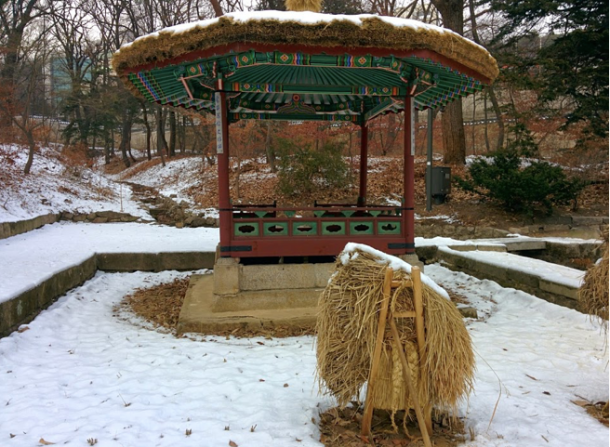Park, Jeonghun
Most people are familiar with palaces in Seoul. Especially, Gyeongbok-gung (Gyeongbok palace) is famous among tourists who visit Seoul. Located right behind Gwanghwamun, its location helped the palace to become full of tourists. On the other hand, there is a garden in a palace, where even Koreans are not very aware of; The Secret Garden of Changdeokgung (Changdeok palace).
The Secret Garden is in Changdeok palace. You can easily visit Changdeok palace by subway line number 3. The palace is located near Anguk station exit number 3. Get out of the exit, go straight, and you will see the palace entrance. To go to the Secret Garden, you need a reservation prior to your visit. The reservations start at 6 business days before your visit, and it is finalized 1 day before your visit. After reservation, you will receive a message stating that the reservation was successfully accepted. Like most reservation does, it is First come first served”. So, it would be wise to book earlier to prevent the reservation being full. If you show your reservation ticket sent by text (SMS), you will be given an option to buy the ticket. The ticket costs additional 5000 won to standard admission to the palace, because the garden is inside the palace quarters. If you are under 24 years old, you can get a discount, as long as you have an official identification to prove it such as, passport or social security card. To protect the environment and the buildings inside the garden, the tours are guided. English tours are provided 4 times a day, they are reduced to 3 times a day only from December to January. The tour takes about 90 minutes, and based on personal experience, there are many hills in the garden, so wear comfortable shoes to prevent sore feet. Furthermore, the secret garden has many trees, which makes lots of shades, so wear warm clothes in the winter to stay warm.
The history of the Secret Garden started in 1404 during the Taejong(The king, who founded Joseon) regime (Han, 2006). After constructing the main buildings in the palace, in 1463 king Sejo expanded the garden by clearing residential areas near the palace. In the Japanese colonization period, the palace and the garden were opened to the public, themed as an amusement park. During that era, to rebuild the palace quarters, structures from other places such as Gyeongbok palace were used. The Secret Garden is about 280 thousand square meters, and there are more than 160 kinds of vegetation. The garden was made to act as a resting ground for the royal family, and due to its significance, it is registered as a UNESCO World Heritage site.
The tour starts at the entrance of the garden, and it draws a large curve around the garden. Accordingly, you will not miss any buildings inside the garden unless there are sudden changes to the tour plan. The most notable building for me was Gyujanggak, which is the royal library. In Joseon dynasty, at the front of the library, aristocrats who were employed were educated by the king himself. The king would teach them Confucian classics, and they were tested on previous lessons. Especially in the era of king Jeongjo, he would extensively test his students by giving them assignments every day; even grading their test papers by himself. In front of the library there is a small pond which gives the place a unique atmosphere. The secret garden has another noteworthy building, which is a small rice paddy, where the king would practice harvesting rice to experience the hardship, which farmers could have in the harvesting season.
To sum up, the Secret Garden of Changdeok palace is a remarkable place in terms of its cultural significance. Because of guided tours, some who want to roam around the garden might view the tour as a boring trip. However, the abundance of the garden and the vegetation inside it would give you the glimpse of Korean royal culture and make you full of enthusiasm. Due to limitation of my knowledge, I was not able to deliver all the facts and experiences I had in the garden. If you want more information, and reserve a visit, go to http://eng.cdg.go.kr/main/main.htm to learn more about the garden and the palace.
(All images except the diagram were taken by the writer himself.)

Figure 1: The tour route
References
Han, D. (2006). Research History of Changdeokgung’s Secret Garden after Japanese Colonization. Seoul: Korean Association of Architectural History.

Figure 2: Gyujanggak (The royal library)

Figure 3: The rice paddy
Leave a comment